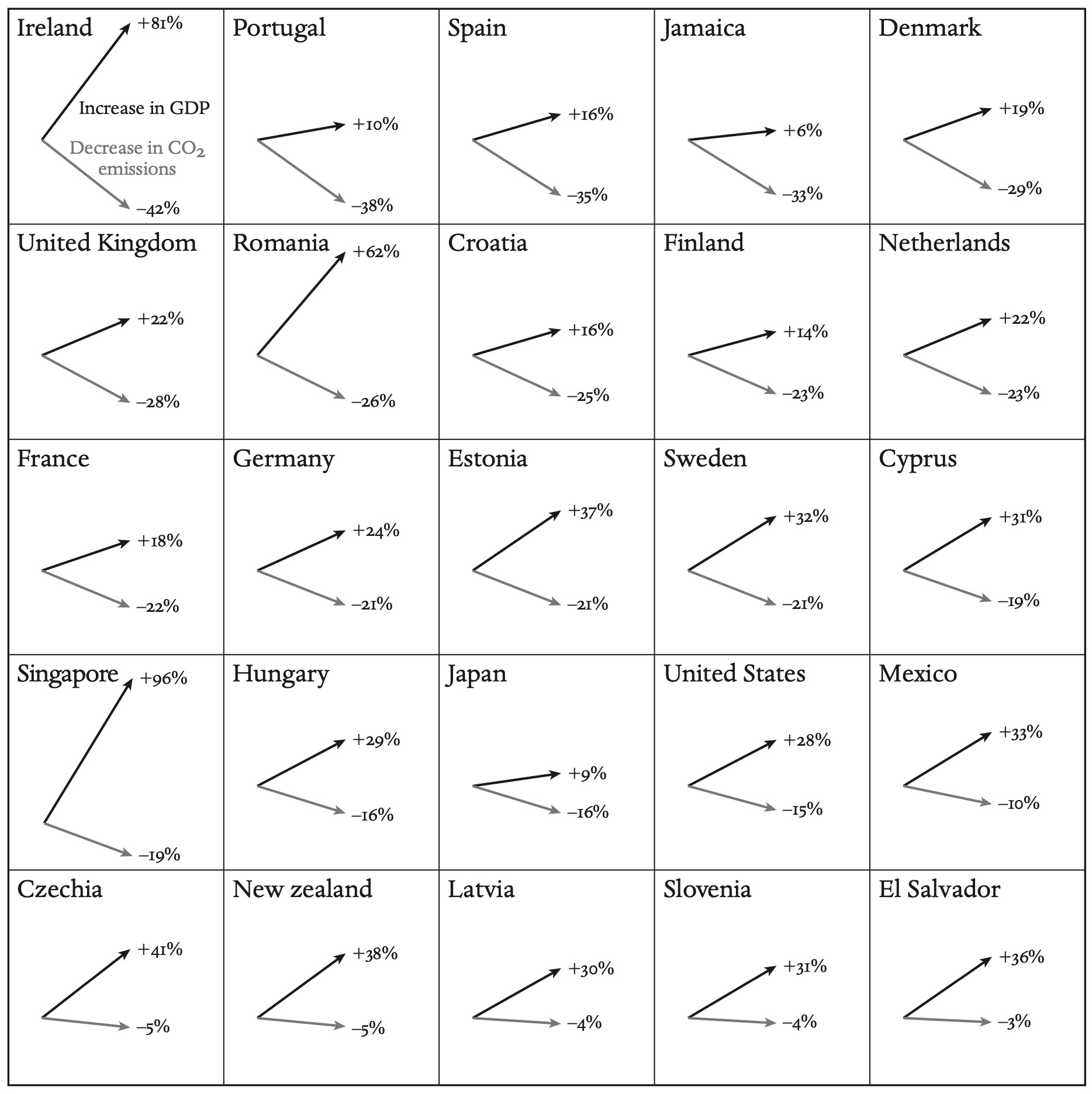
In 2007 the distinguished British economist Nicholas Stern estimated that reducing carbon emissions by 80 per cent would cost 1 per cent of GDP a year. The next year, worried that climate change had sped up, he doubled his estimate to 2 per cent of GDP: the tradeoff between growth and the climate had become far worse. Yet in 2020 Britain’s expert climate change committee found that the cost of eliminating emissions — not simply reducing them by 80 per cent — had fallen to only 0.5 per cent of GDP.
The tradeoff between growth and the climate had dramatically improved. Why? Because technological progress, particularly in renewable energy, meant that people could now respond to the climate challenge at a much lower cost.
Solar energy is the most striking case of this progress. It began in the 1970s as a tool of last resort, an expensive source of energy reserved for the most extreme situations: isolated lighthouses, outer space, cooling medicine in remote places. But technological progress has driven a precipitous fall in the cost of solar modules, and their use has increased dramatically as a result. Fossil fuel energy now costs somewhere between $50 and $150 per 100 kilowatt hours while solar energy costs only around $40 to $54.
Growth that occurs without using more and more material resources and damaging the environment is known as green growth, and the process of breaking the link between the two is called green decoupling. This is now a standard ambition for progressive leaders concerned about climate change.
But the current popularity of the idea obscures quite how radical these views were thought to be until very recently. “The economists will tell you we can decouple growth from material consumption, but that is total nonsense,” proclaimed the influential scholar Vaclav Smil in 2019. Many other observers were equally sceptical.
Events have forced these critics into a series of intellectual retreats. In the beginning, their claims about the nature of economic growth were strident: decoupling, they insisted, was a complete fantasy. But it soon became clear that this position was untenable. In many countries, economies were growing significantly faster than emissions. Some sort of decoupling appeared possible.
In response, critics fell back on a new distinction: between relative decoupling, where emissions grow, but grow more slowly than the economy, and absolute decoupling, where emissions decline. Many critics now said that while the former might be possible, the latter was not. But this revised position turned out to be wrong as well. Data emerged showing how many countries were combining more growth and fewer emissions, as this chart shows.

GDP and emissions, 2005–19. ourworldindata.org/carbon-price • click to enlarge
As countries gathered at the 2022 Climate Change Conference in Egypt, the Economist felt comfortable capturing this trend in a pithy headline: “Economic Growth No Longer Means Higher Carbon Emissions.” But the critics of decoupling are still unwilling to fully concede. Yes, absolute decoupling might be possible — but the magnitude of any fall in emissions will still never be sufficient to solve the problem of climate change. Given the history, I find it hard to imagine that this position will be tenable for much longer either.
In attempting to weaken the tradeoff between growth and other things we value we are aiming for what we might call a Great Decoupling: growth taking place not only without harming the environment but without widening inequality, destroying local places, hollowing out people’s livelihoods or corroding politics. The successful weakening of the tradeoff between growth and the environment is a triumphant demonstration of directed technological change in action.
These innovations in renewable energy didn’t happen by accident. They emerged from the efforts of inventors and entrepreneurs and business leaders, each responding to economic incentives that confronted them in the market. Many of these incentives — carbon taxes on fossil fuels, subsidies for clean alternatives, emission standards for products and services — were set by governments. Others were determined from the bottom up by individuals via cultural movements (from Earth Day to Extinction Rebellion) and formal institutions (from Greenpeace to Friends of the Earth) that demanded change.
The combined result of these efforts — taxes and subsidies, laws and regulations, social narratives and norms — was a spread of incentives that redirected technological progress, pushing it away from dirty technologies towards cleaner ones. Resources were spent on developing new ideas that led not just to more growth, but a different type of growth as well. •
This is an edited extract from Daniel Suskind’s Growth: A Reckoning (Allen Lane, 2024).
The post The great decoupling appeared first on Inside Story.







